|
|
|
|
|
TRIPURA
|
|
|
|
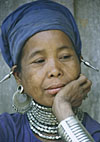 |
|
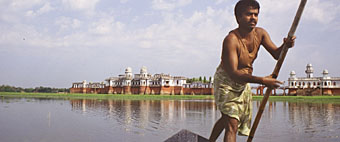 |
|
|
|
Formerly a princely state, Tripura became a Part C state of the Indian Union in 1949. It was made into a Union Territory in 1957 and conferred full statehood in 1975. The geographical situation of the state is as follows: Bangladesh on the north, west and south-west, Assam and Mizoram on the east. A narrow strip through Assam (Barak Valley) and Mizoram links it with the rest of India. Covering an area of 10,486 square kilometres, Tripura can be geograhically divided into three broad zones- the hill region, the flat plains, and the river basin. The population figure in 1991 Census is 2,744,827.
|
|
|
|
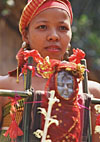 |
|
The original inhabitants of Tripura have been tribal groups like the Tipras, the Reangs and the Hrangkhols, most of whom belong to the Bodo group of the Indo-Mongoloid family. However, the royal dynasties had come under Hindu-Aryan influence quite early and had patronised Aryan culture. It has been suggested on the basis of various evidences that Buddhism and the Nath cult had also made their entry into Tripura. Subsequently Bengali language and culture found favour with the ruling and elite groups. In the process, there arose a gulf between the "Sanskritized" ruling elite and the rank and file of the local population.
|
|
|
|
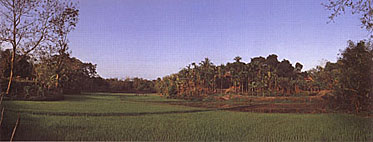 |
|
|
|
In recent times the unusually heavy influx of East-Bengali settlers has brought in such a drastic change in the demographic pattern of the state that the indigenous population has been reduced to a weak minority.
Of the indigenous population, the Tipras or Tripuris constitute the most prominent group. They are supposed to be the oldest inhabitants having links with some of the Bodo groups of Assam.
|
|
|
|
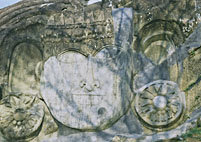 |
|
|
The highlights of Tripura are:
• The people and the landscape
• Unakoti Stone Park
• Neermahal Lake Palace
• Pilak excravation region
• Southern Tripura (Buddhist Mogh people)
• Udaipur
All these highlights and more are the subject of two books by Peter van Ham:
THE SEVEN SISTERS OF INDIA
Tribal Worlds Between Tibet And Burma
IN DEN BERGEN DER KOPFJÄGER.
Indiens Wilder Nordosten
|
|
|
Click below to reach the other stirn-vanham pages
on Northeast India:
ARUNACHAL PRADESH, NAGALAND, MANIPUR, MIZORAM, ASSAM, MEGHALAYA,
Christoph von Fürer-Haimendorf
& Verrier Elwin
|
|
|
|
|
|
|
|
|
|
|
|
|
|
|
|
|
